Evaluate Probability Given a Continuous Function
We begin by defining a continuous probability density function. We use the function notationf(x). Intermediate algebra may have been your first formal introduction to functions. In the study of probability, the functions we study are special. We define the function f(x) so that the area between it and the x-axis is equal to a probability. Since the maximum probability is one, the maximum area is also one. For continuous probability distributions, PROBABILITY = AREA.
Example 1
Consider the functionf(x) =
is a horizontal line. However, since 0 ≤ x ≤ 20, f(x) is restricted to the portion between x = 0 and x = 20, inclusive.
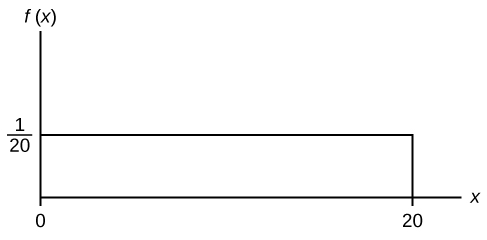
for 0 ≤ x ≤ 20.
The graph off(x) =
is a horizontal line segment when 0 ≤ x ≤ 20.
The area betweenf(x) =
.
Suppose we want to find the area betweenf( x) = and the x-axis where 0 < x < 2.
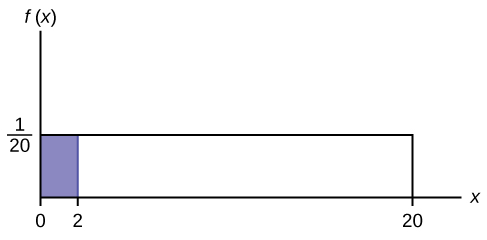
Reminder: area of a rectangle = (base)(height).The area corresponds to a probability. The probability that x is between zero and two is 0.1, which can be written mathematically as P(0 < x < 2) = P(x < 2) = 0.1.
Suppose we want to find the area betweenf(x) =
and the x-axis where 4 < x < 15.
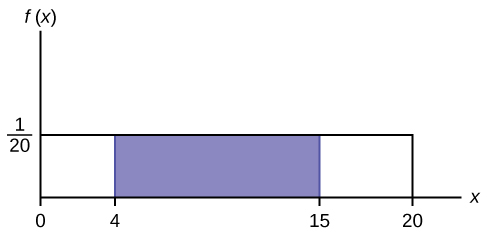
The area corresponds to the probabilityP(4 < x < 15) = 0.55.
Suppose we want to findP(x = 15). On an x-y graph, x = 15 is a vertical line. A vertical line has no width (or zero width). Therefore, P(x = 15) = (base)(height) = (0)
= 0
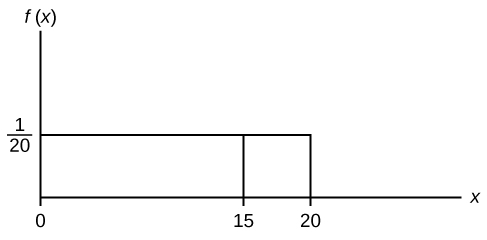
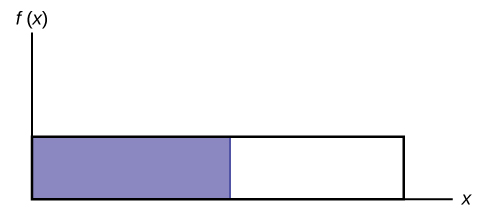
, 0 ≤ x ≤ 20.
To calculate the probability thatx is between two values, look at the following graph. Shade the region between x = 2.3 and x = 12.7. Then calculate the shaded area of a rectangle.
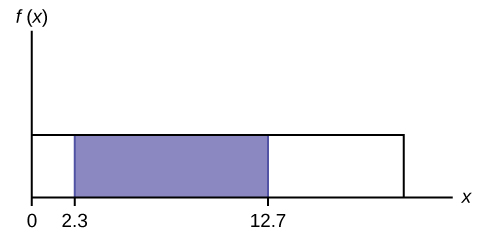
Please watch this video to help you summarize what you just read.
Try It
Consider the functionf(x) =
for 0 ≤ x ≤ 8. Draw the graph of f(x) and find P(2.5 < x < 7.5).
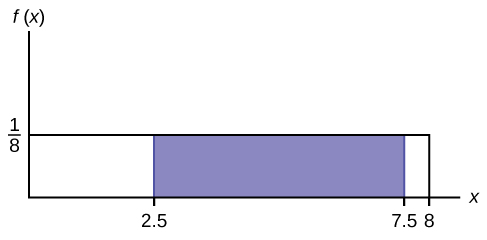
Concept Review
The probability density function (pdf) is used to describe probabilities for continuous random variables. The area under the density curve between two points corresponds to the probability that the variable falls between those two values. In other words, the area under the density curve between points
a and b is equal to P(a < x < b). The cumulative distribution function (cdf) gives the probability as an area. If X is a continuous random variable, the probability density function (pdf), f(x), is used to draw the graph of the probability distribution. The total area under the graph of f(x) is one. The area under the graph of f(x) and between values a and b gives the probability P(a < x < b).
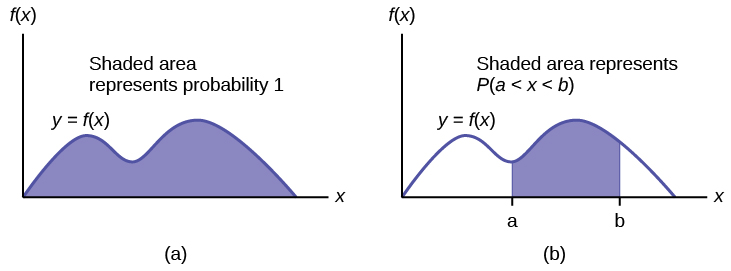
Formula Review
Probability density function (pdf)f(x):
- f(x) ≥ 0
- The total area under the curve f(x) is one.
Cumulative distribution function (cdf):P(X ≤ x)
Licenses and Attributions
chamberssenis1987.blogspot.com
Source: https://www.coursehero.com/study-guides/odessa-introstats1-1/continuous-probability-functions/
Belum ada Komentar untuk "Evaluate Probability Given a Continuous Function"
Posting Komentar